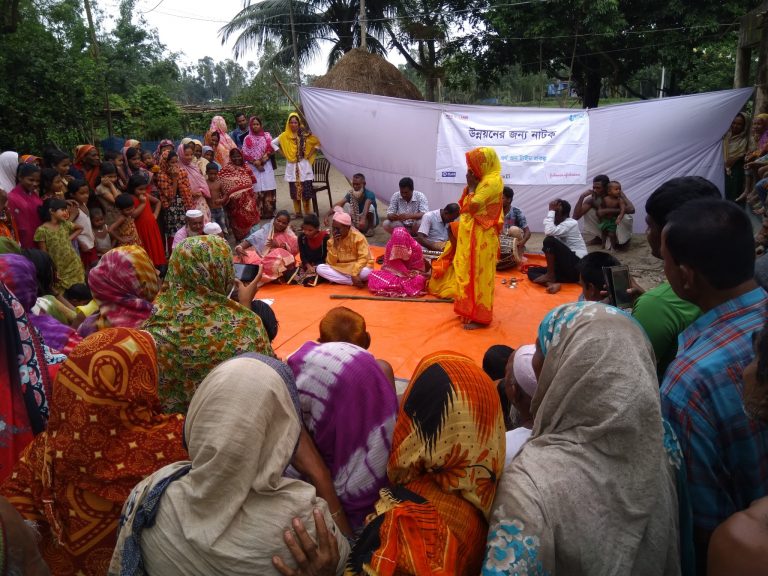By Arefin Amal Islam
When we talk about preventing newborn deaths, more often than not we talk about reducing preventable causes of newborn deaths. As premature birth and its complications is the leading cause of newborn and under-5 deaths, we prioritize our discussions on Kangaroo Mother Care, antenatal corticosteroid (ACS) use, simplified antibiotic regimen for possible severe bacterial infections and newborn special care as the main measures to prevent newborn deaths due to premature/preterm births. Other measures are geared to ensuring newborn survival and the ACS has not been widely used rather its use has suffered a setback due to the recent trials conducted in seven sites of the Global Network for Women’s and Children’s Health Research (Argentina, Guatemala, Zambia, Kenya, Pakistan, and Belgaum and Nagpur of India) in the early 2000’s.
National health programs in the recent past included new newborn health interventions along with the existing essential newborn care to strengthen the pace of newborn death reduction. All these measures are targeting preterm babies after they are born and there is not that much emphasis on the measures that can prevent the preterm birth and ensure full term births.
As approximately 1 million children die each year due to complications of preterm birth and many survivors face a lifetime of disability — including learning disabilities and visual and hearing problems — and considering that the rate of premature births has increased over recent years, we need to invest in effective ways to not only treat preterm newborns but to prevent preterm delivery. Key interventions to improve newborn survival include Kangaroo Mother Care, as well as prevention of infections (eg, chlorhexidine application to umbilical cord after birth) and management of serious life-threatening infections (e.g. treatment for possible serious bacterial infections with simplified antibiotic regimens).
Recent evidence [1] suggests that while we often do not know the exact cause of premature births, several factors are known to increase the risk of preterm birth. Medical conditions, infections, genetic predispositions, lifestyle (eg, smoking) and socio-demographic disadvantage are among those factors. Several of these risk factors are clearly “modifiable,” meaning that they can be changed to help reduce the risk; whereas may not be readily modifiable.
These modifiable risk factors are grouped together and are commonly known as LINC factors: L stands for life styles, I stands for infections, N stands for nutrition and C stands for contraception. Life styles include child marriage, domestic violence, intimate partner violence, heavy work during pregnancy, smoking and exposure to cooking smoke and so on. Infection includes malaria, urinary tract infection, reproductive tract infection, sexually transmitted diseases and so on. Nutrition includes iron deficiency anemia, underweight, maternal height as important factors. Contraception includes teen pregnancy, advanced maternal age, birth spacing.
This blog aims to call attention to the need to re-double our efforts to ensure that public health and other programs address these modifiable risk factors as important strategies to achieve SDG targets for newborn and child mortality and morbidity.
[1] The precursors to spontaneous preterm birth vary by gestational age (Steer, 2005), and social and environmental factors, but the cause of spontaneous preterm labor remains unidentified in up to half of all cases (Menon, 2008).

 Dr Arefin Amal Islam is a public health specialist and passionate about newborn health currently working with Plan International Bangladesh to oversee the Born on Time project. The project is being implemented in three countries (Bangladesh, Ethiopia and Mali) by a consortium led by World Vision and composed of World Vision, Save the Children and Plan International to prevent preterm births through community and facility-based interventions. He previously worked with Save the Children, USAID-funded Smiling Sun Network, the World Health Organization, the Family Planning Association of Bangladesh, Helen Keller International, and the Kumudini Trust of Bangladesh.
Dr Arefin Amal Islam is a public health specialist and passionate about newborn health currently working with Plan International Bangladesh to oversee the Born on Time project. The project is being implemented in three countries (Bangladesh, Ethiopia and Mali) by a consortium led by World Vision and composed of World Vision, Save the Children and Plan International to prevent preterm births through community and facility-based interventions. He previously worked with Save the Children, USAID-funded Smiling Sun Network, the World Health Organization, the Family Planning Association of Bangladesh, Helen Keller International, and the Kumudini Trust of Bangladesh.